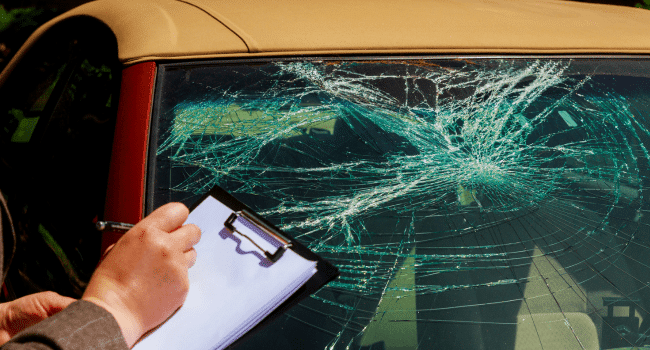Table of Contents
Each year, six million car accidents result in around six million injuries to those involved. Even if your collision turns out to be a minor fender bender, you’ll still have to deal with car damage, possible auto insurance rate increases, and paying your deductible out of pocket. Learn these crucial steps in this article. It’s imperative that you understand what details to include in an accident report and how to submit a claim.
If the other party tells you not to worry about calling the police or filing a report, you may feel lucky given all the negative consequences of a car accident. Unfortunately, this is not entirely accurate. We’ll explain what information you must include on a crash report and why it’s critical to file one quickly following your subsequent accident.
Your Narrative of the Mishap
There is a good chance that the police will be contacted after a car accident. This typically means that the officer on the scene completes the accident report. They will nevertheless require a written statement from you outlining the events leading up to and occurring during the accident. When doing this, you must be as specific as you can. Try to recall your speed, whether the other driver was texting or appeared to be distracted, and whether you were travelling straight ahead, making a turn, or coming to a stop when the other vehicle passed you. If you are involved in a car accident, it is important to understand your car accident liability. To learn more about this topic, visit haunmena.com for helpful information on what you need to know about liability after a borrowed car accident.
This is crucial if you are aware that you are not to blame for the accident. The more information you can provide about the collision and the road conditions, the more likely it is that the officer will concur with you and blame the other driver. The report will include the statements of both you and the other driver so that it is available to your insurance providers and for your records.
Contact and Insurance Details
You should fill out your accident report if you are in an accident and the police are not called or are unable to arrive at the scene. Include your insurance information and contact details on this document, and ask the other driver for the same. While some states offer specific report forms, others might call for a statement. Having accurate information is essential if you need to later file a medical claim because of injuries you sustained, regardless of this.
Pictures are Vital
Regardless of how minor the collision was, document the damage to both vehicles with photos. Print these out, then give them to the organization handling the incident or submit them along with your report. Pictures are crucial because occasionally individuals try to further damage their vehicle after an accident to defraud their insurance company. Despite being against the law, this still happens, forcing insurance companies to increase all premiums. Furthermore, you don’t want your rates to skyrocket as a result of someone alleging that you damaged more property than you actually did.
Witnesses’ Names
You must also get the information from any witnesses who may have seen the accident. These people might be occupants of either of the involved cars or just bystanders who stopped to lend a hand. Regardless of their level of involvement, anyone who saw the accident should report what they saw. Once more, this can aid in determining liability and avert needless insurance claims.
Police officers are generally great about making sure all witnesses have provided their information, but occasionally this can slip through the cracks. Take the time to note down the name and contact details of any parties that aren’t being mentioned in your statement or report if you happen to notice that they should be.
State Laws on Reporting Accidents
When, how, and whether an accident must be reported are governed by different laws in each state. If you choose to not involve law enforcement at all but still record the accident with the Department of Motor Vehicles, you can file your own accident report in addition to the officer’s report. In order to defend yourself against lawsuits or false claims from the other driver, it is always advisable to document the crash, regardless of your state’s technical laws on accident reporting or how you choose to do it.
Keeping Safe While Driving
There are a few helpful ways to prevent accidents or at the very least reduce the risk of injury should you be involved in one, even though you can’t guarantee that you won’t ever have one. Never drive while intoxicated or under the influence of drugs or alcohol, and keep an eye out for other drivers who are driving erratically. Driving while texting or using a phone can cause your reaction time to be twice as slow as it normally is.
No matter how short your trip, always buckle up and make sure kids are properly buckled up in the backseat. Always be ready for the weather in your area; if snow is predicted, have tyre chains on hand, and make sure your wiper blades are functioning properly. It will be less likely that an accident will occur if these suggestions are followed, along with all applicable traffic laws. However, you now know precisely what details you should keep in mind if you are in a collision. It is better to get opinion of an expert auto accident lawyer New Bedford before submitting the accident report.
Read More on KulFiy
Things that you can Expect from a Personal Injury from after Facing an Accident
7 Things You Need To Consider When Hiring A Lawyer Following A Car Accident
Top Mistakes That’ll Hurt Your Car Accident Lawsuit
